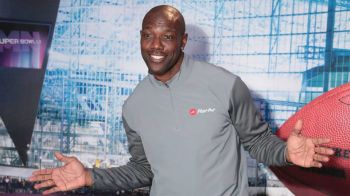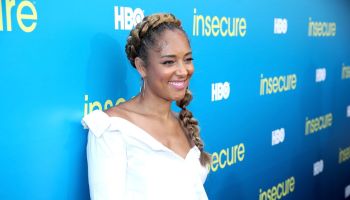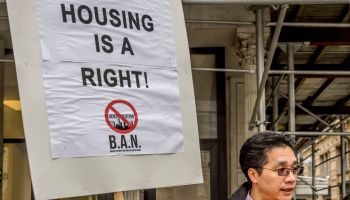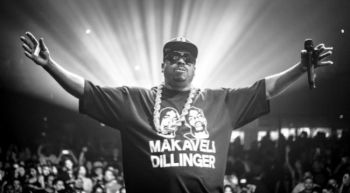In 1913, thousands marched in Washington D.C. for the Woman Suffrage Parade. Strategically scheduled a day before the inauguration of President-elect Woodrow Wilson, the parade called for a constitutional amendment for women’s right to vote.
On January 21, 2017, one day after the inauguration of President-elect Donald Trump, thousands are expected to gather in Washington D.C., in yet another march for women’s rights.
The Women’s March on Washington was organized to “send a bold message to our new government on their first day in office, and to the world that women’s rights are human rights,” according to its mission statement. “We stand together, recognizing that defending the most marginalized among us is defending all of us.”
The statement rings with overwhelming poignancy during this time in America.
Over the course of his campaign, our nation was subjected to Donald Trump’s offensive rhetoric, which callously marginalized multiple groups of people: women, immigrants, Muslims, the LGBTQ community, people of color, people with disabilities, and survivors of sexual assault.
In just a few days, to the terror of many, that same Donald Trump will take office as our nation’s 45th president.
“There are a lot of people in this country and abroad who were traumatized by the idea that Donald Trump is going to be president of the United States,” Tamika D. Mallory, board member of the Gathering for Justice and national co-chair of the Women’s March on Washington, told NewsOne. “People were really trying to figure out what to do, and they felt very confused and troubled.”
The march will provide a space for concerns to be heard, but while the aim is to challenge Trump’s administration, this is not an anti-Trump march.
“It’s called the March on Washington, and there’s a reason for that,” said Mallory. “Because all the hauls of power are in Washington, and so if we go there, if we come to Washington and we’re talking about Donald Trump only and not addressing the Senate, the Congress, the Supreme Courts, and sending a very strong message back to our local government – our governors and those people who have power in our cities and states – then we’ve missed the mark.”
It was Teresa Shook who decided to take action.
On November 9, 2016, the retired lawyer currently living in Hawaii shared a Facebook post “suggesting a protest timed around Trump’s inauguration,” writes The Guardian. Previously dubbed the “Million Women March,” the event has attracted national attention, with over 200,000 people slated to attend according to the the march’s Facebook page as of press time.
“I think the mission at this point is to be able to bring people together to show solidarity around a variety of issues and concerns and to really build power together,” said Mallory.
But despite the march’s aim to be inclusive, racial tension has been high since its inception. The biggest issue? White women feel excluded by conversations surrounding race relations, while women of color feel “white allies” are “only now waking up to racism because of the election,” The New York Times notes.
“You don’t just get to join because now you’re scared, too,” read a post written by a Black activist and march volunteer on the event’s Facebook page. “I was born scared.”
In a letter written to The New York Times, Margery Freeman writes, “Too many of us who are white and consider ourselves progressive are silent about racism. We say we’re against racism, yet we do nothing about it. When challenged, we become confused, defensive, hurt, even angry. We react, but we rarely explore our history, our opinions, our biases.”
Freeman, who is a 76-year-old white woman from Mississippi, says she’ll be taking a bus to the Women’s March on Washington “because I am convinced such public actions are essential to a healthy democracy.”
But some are still in opposition of attending.
In a letter titled “Do Not Look for Me at the Women’s March on Washington,” LeRhonda S. Manigault-Bryant, associate professor of Africana studies and associate dean of the faculty at Williams College, writes, “There is a long history of black women being overlooked by, excluded from and co-opted into events that profess to be for the benefit of all women but that at their core almost exclusively benefit middle class, straight, white women.”
Vanessa Wruble, co-founder of Okayafrica and head of campaign operations for the Women’s March, heard this concern early on. She was responsible for connecting Mallory and Carmen Perez with Bob Bland, CEO and Founder of Manufacture New York (MNY) and another co-chair of the march.
“They wanted to ensure that women of color were at the center of this convening and that we were a part of setting the agenda, setting the mission for the march, and so we accepted,” Mallory said.
Concerning the racial tension, Mallory stated, “I think that we’ve been intentional about having difficult conversations. That’s a part of the whole issue around centering the voices of women of color. We never woke up and said ensuring inclusiveness means putting a few women of color on a website.That’s not what real inclusivity looks like.”
She continued, “It means being able to talk freely about the issues that people of color face in this country and how we feel about what we’ve been put through, the oppression we’ve faced and the fact that others have benefited from that oppression.”
The Women’s March on Washington will begin at 10 a.m. at Independence Ave. and Third Street S.W. Leaders of the march include veteran civil rights advocates, with Angela Davis and Harry Belafonte serving as honorary co-chairs.
The march is being supported by multiple partners, including Planned Parenthood and Amnesty International.
Celebrity appearances are slated to include Uzo Aduba, America Ferrera, Zendaya, and more.
“We want to inspire people to get involved, provide opportunities and entry points into the movement, because what we know is that this work has already been happening,” Mallory said. “There have been people saying ‘Well I don’t understand the goals of this march.’ The goals are the same that they have been. There are many that have been out here and this is a continuation of the work that we’ve already done. What we now want is for people who are not necessarily woke to get involved at this point that they woke up and felt like they wanna do something. You can do something with the existing organizations and the existing movements that are around. We want to encourage people to be inspired on the 21, but be ready to work on the 22.”
SOURCE: Women’s March on Washington, The Guardian, The New York Times, CNN
SEE ALSO:
Women Plan March On Washington To Protest Trump Election
The Women’s March On Washington Aims For All To ‘Stand Together’ was originally published on newsone.com
















